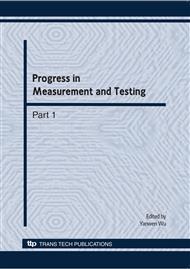p.482
p.488
p.494
p.500
p.507
p.513
p.519
p.525
p.530
Chinese Calligraphy Brush Stroke Interactive Model with Ink Diffusion Style
Abstract:
This paper presents an interactive method of using ink diffusion, and gradually approaching simulation brush character with style of Chinese painting and calligraphy. Try to use materials based on the Chinese ink painting: ink and rice paper, according to their characteristics to build the diffusion rules to simulate text ink. Although the initial can show the phenomenon of ink rendering, they can only show diffusion of the ink with black lines, Can not rendering a complete ink diffusion behavior, it is difficult to form a sense of artistic calligraphy. It proposes Interactive model to amend the power of the brush pen and puts forward a binding behavior of ink broken down. The results show that based on the pratice physical meaning, considering the interaction of the two materials(ink and rice paper), appropriate to improve the mathematical equation model to render the calligraphy image more in line with Chinese ink painting style.
Info:
Periodical:
Pages:
507-512
Citation:
Online since:
May 2010
Authors:
Keywords:
Price:
Сopyright:
© 2010 Trans Tech Publications Ltd. All Rights Reserved
Share:
Citation:


